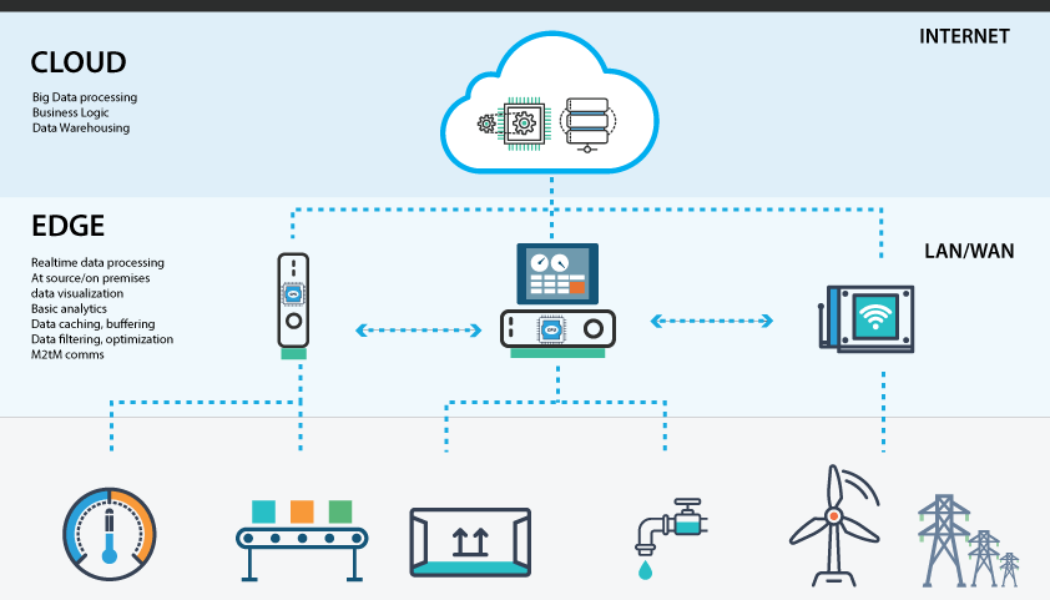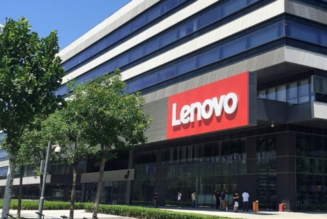/* custom css */
.tdi_4_bdd.td-a-rec-img{ text-align: left; }.tdi_4_bdd.td-a-rec-img img{ margin: 0 auto 0 0; }
Edge computing is rightly being hailed as the cloud’s silver lining. It is a force multiplier that has triggered a step-change in the performance and scope of the abilities of distributed sensing, computing and action. In short, it brings significantly enhanced benefits to users.
It is rare for a single emerging technology to have a truly disruptive impact by itself. Edge computing has emerged as such a key technology within a cluster that includes the cloud, the internet of things (IoT), sensors and smart devices, 5G and artificial intelligence, amongst others.
Enter EDGE Computing
/* custom css */
.tdi_3_bb3.td-a-rec-img{ text-align: left; }.tdi_3_bb3.td-a-rec-img img{ margin: 0 auto 0 0; }
The quest to reduce network traffic in the cloud fuelled innovation to develop smart devices which could place autonomous intelligence where it is needed, where the data is generated and where the action is required – at “the edge”. Hence the birth of edge computing.
In essence, edge computing refers to a system where smart devices with the ability to autonomously sense, compute, communicate and act, are connected to a network with the intention of gathering, processing and acting on local information, whilst simultaneously being informed by and informing the broader network with relevant information.
Advances in artificial intelligence, sensors, telecommunications technologies such as 5G, computing hardware and the maturing of blockchain technology – in essence, the infrastructure to support the edge – enabled a new generation of smart devices, which could operate autonomously without the need to continually revert to a central intelligent computer and controller whilst communicating only the essential data required by other connections and devices.
The edge can be juxtaposed against a traditional cloud model, where the computing intelligence and storage of data are highly concentrated in a number of centralised computers located in a handful of hyper-scale data centres which do the heavy lifting.
In order to be processed or stored, however, the vast amounts of data must first be transmitted via the internet to the central cloud computers from wherever in the world it is generated, be it by people, other computers or devices. Needless to say, the exponential growth in data and its transmission in the cloud, has led to a saturation of the internet creating the data traffic jam referred to above.
One of the innovation drivers of edge computing was to relieve the bottlenecks that were beginning to throttle the advances which the cloud brought in the first place.
Edge computing has not only become an important technology in its own right, particularly with regard to addressing local issues “at the edge”, but also a key enabling technology in the cloud ecosystem. Rather than competing with the cloud per se, it complements the cloud in a synergistic manner.
The Linux Foundation’s general manager of networking predicts that edge computing will overtake cloud computing by 2025, referring to the ability to compute and storage resources that are 5 to 20 milliseconds away.
In addition to relieving the data traffic congestion on the internet itself, which in turn enhances the performances of other cloud users, edge computing also brings a number of other benefits. One of the most important of these is the reduction of latency.
Simply put, latency is the time delay between “pushing the button” and waiting for the signal to arrive and subsequent response at another remote location.
In order for real-time systems, such as driving a car, for example, to be able to be operated remotely, extremely short latency times are required. Until recently, this was something that the technology of the day was unable to deliver.
The problem was exacerbated by the congestion-related delays in the cloud referred to above. The very short latency delays that have now become possible with the advent of 5G and edge computing have enabled a new generation of remote real-time experiences, ranging from remotely driven vehicles to enhanced augmented reality.
It is not difficult to understand why the force-multiplier impact of edge computing as an enabling extension of the cloud, in conjunction with its supporting infrastructure, is considered to be one of the most important contemporary emerging technologies.
“Edge computing is the smart silver lining of the cloud. Technological advances now enable us to place smart IoT devices and sensors ‘close to the action’. Not only does this provide computing power where it is needed, it also significantly reduces latency and network traffic in the cloud,” says Sivi Moodley, CEO at Macrocomm Group.
“Edge computing brings the potential of an entirely new range of applications, which will disrupt many current business models,” they conclude.
The Way Forward
Edge computing is a powerful technology which contributes significantly towards enhancing the scope and performance of cloud-based applications.
It provides game-changing benefits to users, particularly when combined with artificial intelligence.
Edge computing is a young technology and hence one can optimistically anticipate increasingly higher performance, reliability and more use cases, which are typically also accompanied by falling prices. The growth predictions for the edge computing market is encouraging.
Edited by Luis Monzon
Follow Luis Monzon on Twitter
Follow IT News Africa on Twitter
/* custom css */
.tdi_5_bba.td-a-rec-img{ text-align: left; }.tdi_5_bba.td-a-rec-img img{ margin: 0 auto 0 0; }









